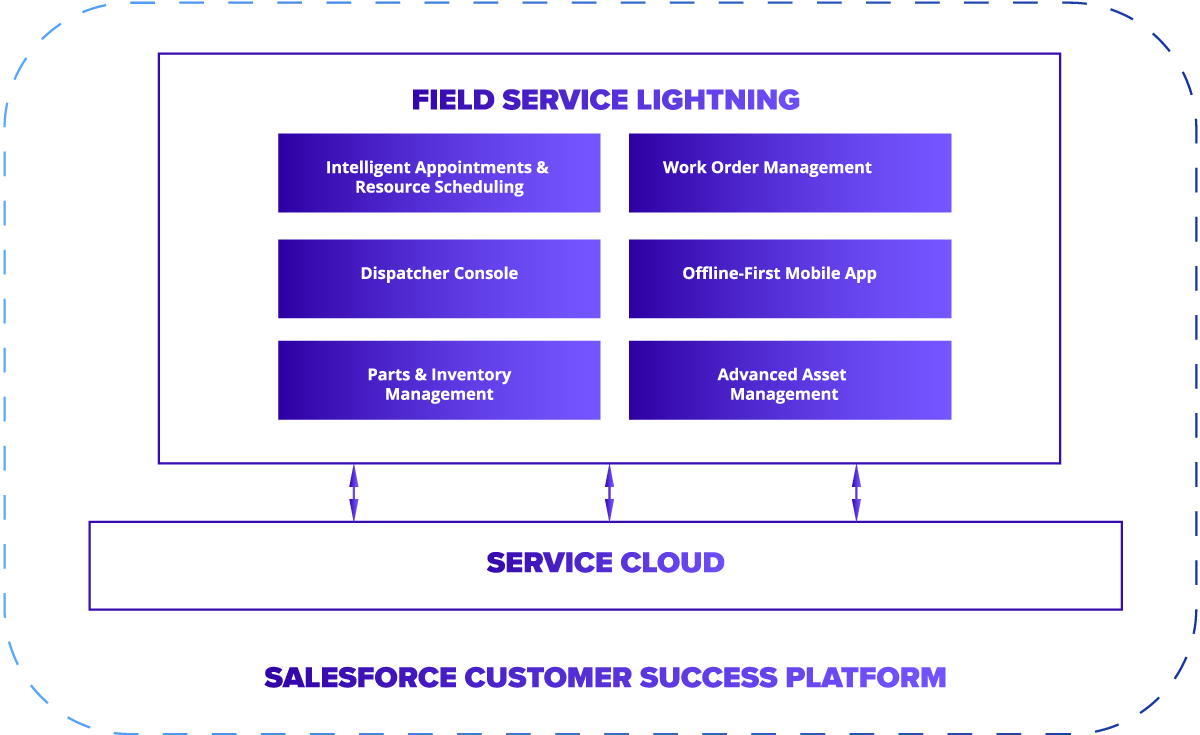
Transforming Field Service With Salesforce FSL
Modern field service focuses on delivering fast, connected, and reliable experiences wherever customers need support. Field teams often shape the customer’s perception, making every interaction critical.
Today, 82% of service decision-makers say their customer service, including field operations, must evolve to remain competitive. Yet many organizations still rely on disconnected systems and outdated processes, which slow technicians down and make consistent, high-quality service harder to achieve.
Customer expectations are rising alongside technology. By 2022, 70% of customer interactions were expected to involve AI, chatbots, or machine learning. Still, only 30% of field service providers were ready to use AI-driven tools to improve scheduling, communication, and service quality.
WHY MODERN FIELD SERVICE MATTERS
To deliver reliable service, every employee involved, from agents to dispatchers and field technicians, needs access to accurate, real-time information. Modern tools allow teams to collaborate, streamline workflows, and have a full view of each customer and case.
Understanding the context of every request, whether it’s a routine inspection or a complex repair, reduces errors, speeds resolution, and improves customer satisfaction.
A well-coordinated field service operation typically follows this flow:
- Customer books a service appointment through their preferred channel.
- Service agent creates a work order and schedules the appointment.
- Dispatcher assigns the task to the best-suited technician based on location, expertise, and availability.
- Technician completes the work on-site and updates the system in real time, giving everyone a unified view of progress.
COMMON SERVICE AND FIELD GAPS
Contact centers are often the first touchpoint, but many struggle to prioritize channels or select the right technology. Customers expect faster, smarter service across multiple channels, creating a complex environment that requires coordination and visibility.
Nearly 70% of Gen X and Millennial customers use voice assistants like Siri or Alexa, and a typical customer may use up to ten channels to request service. Meeting these expectations requires a unified approach.
Common service gaps:
- Lack of innovation in processes and technology
- Poor allocation of resources and limited transparency
- High operational costs and weak governance
- Fragmented service silos that impede collaboration
Dispatch teams are critical to bridging customer needs with field operations. They manage routing, scheduling, asset use, and act as the link between customers and technicians. Small mistakes here can significantly affect service quality.
Common dispatch gaps:
- Low customer satisfaction and friction-filled experiences
- Missed or late appointments
- No unified view of customers or field operations
Field technicians are the face of the company. Their work directly impacts satisfaction, competitive differentiation, and customer loyalty.
One of the most important metrics for improving service quality is first-time fix rate (FTFR). According to Aberdeen Group, “Best-in-Class” companies resolve issues on the first visit 80% of the time, compared to 75% for average companies and just 61% for laggards. Even a 5% improvement can elevate an organization from average to outstanding.
Common field gaps:
- Low productivity and efficiency among field technicians
- Manual or fragmented operations
- High operational costs
- Low technician morale
HOW FIELD SERVICE LIGHTNING SOLVES THE GAPS
Addressing the gaps in field service requires modern, integrated technology. SoftServe helps organizations implement Salesforce Field Service Lightning (FSL) as part of the Salesforce Service Cloud suite, enabling seamless, end-to-end field service management.
FSL connects all parts of service delivery, including contact centers, dispatchers, and field technicians, into a single, unified system. It streamlines scheduling, optimizes technician assignments, tracks work orders in real time, and ensures that all service data is captured and accessible across teams. The result is faster response times, improved resource utilization, and a more consistent, high-quality customer experience.
Integration is another key advantage. Nucleus Research highlights that companies often choose Salesforce for field service because FSL works seamlessly with other Salesforce Clouds and the broader ecosystem, creating a fully connected digital environment.

With FSL, organizations gain:
- Operational efficiency: Optimize routing, scheduling, and resource allocation.
- Higher customer satisfaction: Provide faster, smarter, and more reliable service.
- Data-driven insights: Make informed decisions with a complete view of customers and field activities.
CONCLUSION
Field Service Lightning improves efficiency, customer satisfaction, and revenue, but technology alone isn’t enough. Success requires the right processes, strategy, and implementation partner to ensure all systems work together seamlessly.
SoftServe provides expertise in Salesforce implementation and field service modernization. We help organizations connect teams, tools, and data, improving first-time fix rates, reducing costs, and delivering consistent, reliable service.
Whether you are starting your FSL journey or optimizing existing operations, SoftServe can help you get the most from Salesforce FSL and stay competitive.
Start a conversation with us
